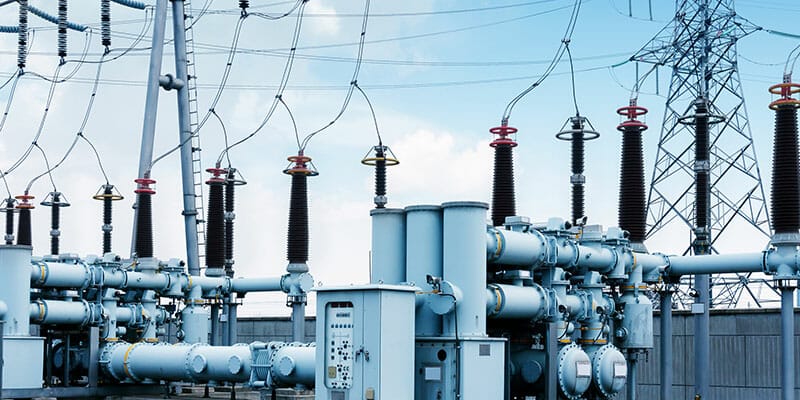- Home
- About us
- Products
- Dealer Enquiry
- Contact Us
- 044 -2486 1994
- +91 99623 98222
- sales@nantech.in
- REQUEST A QUOTE

When it comes to electricity distribution & supply, the role of transformers is essentially crucial. Before electricity reaches our homes from power stations, its overall voltage needs to be reduced in such a way that our electric wires and equipment are able to operate without getting damaged. Electrical gadgets of even the highest quality such as UPS systems from Nantech - one of the leading UPS manufacturers in Chennai can operate smoothly because transformers do their job.
So, high voltage transformers come into the picture to ensure the optimum performance of electricity supply systems and the safety of users. Needless to say, the role of transformers is quite vital. Let us learn more about the overall scheme of things.
Essentially, high-voltage transformers are electrical equipment with the ability to decrease the voltage phases of electricity. These transformers need to have the highest standards of insulation installed in them to meet the usage requirements of people living in a particular locality. However, even the best high-voltage transformers experience breakdowns when the voltage levels surge too much in a limited time. Technically, all high-voltage transformers operate in a single phase of voltage having core-type functionality.
Varieties of High Voltage Transformers
Electromagnetic induction is the general principle based on which all high-voltage transformers operate. However, there are three important varieties of transformers, namely:
Various Designs of High Voltage Transformers
To transform voltage as well as current electric levels, transformers use the concept of electromagnetic induction in both coils. They could be set up in either a single phase or 3 phase. When you start moving towards the bottom of the list of the high current voltage coils, the size as well as costs of a transformer tend to increase. The single-phase configurations can be set up for single-phase, dual-phase, quad phases as well as ladders or even 5-lead. Three-phase configurations, on the other hand, are set up for Wye and Delta configurations.
If the high voltage transformers are to be utilized for multiple low voltages and also to avoid short circuits, then they must have multiple primary. When you are looking to buy or design High-voltage transformers, there are some crucial factors to consider. These factors include the highest ratings for secondary voltage & current, greater output as well and power ratings. These devices can also be built in the form of toroidal transformers. Laminated transformers may also be considered. Toroidal pulse transformers generally have copper wire surrounded around with a cylindrical core to allow the magnetic flux to flow. On the other hand, the laminated transformers have layered cores. They are also referred to as E-I transformers which have been insulated using an insulating dielectric material.
The method of operation of high voltage transformers must be pretty clear from reading the above sections. Various means and methods are used to decrease the voltage of electric currents in the transformers so the electricity becomes safe for use by the components to which it shall go.
The fundamental principle in transformer operation is this– an electrical charge generates a magnetic field and the magnetic force inside the winding can start producing voltages across the coil. As a result of their close vicinity, the electricity in the primary coil generates a magnetic field causing power output throughout the secondary coil to be much lower in terms of voltage. If the secondary coil has more turns, it generates more voltage, and the transformer is referred to as “set-up”. On the other hand, a lower number of turns produces lesser voltage and is termed a “step down”.
At its core, high-voltage transformers are converters that receive electricity at high voltages. Thereafter, voltages are converted from one level configuration to the other, typically from greater to lesser. The insulating abilities of these power transformers should always be cautiously created to endure these high voltages
Also Read: The Complete Buying Guide For Voltage Stabilisers
High-voltage transformers are also utilized to power plasma generators. Specially designed coils are employed to increase voltages to levels that are sufficient to generate plasma. Wind turbines and other crucial sources of renewable energy make use of these devices to transfer energy to where it is needed. Other application areas for these devices encompass:
Staying Safe When Working With High-Voltage Transformers
Since current transformers have the ability to handle high voltages, it is critical that precautionary measures are taken wherever it has to be handled directly, with the goal of preventing accidents.
Takeaway
The significance of using top-notch transformers in a distribution system for electricity cannot be overstated. Transformers are an essential component for ensuring good electrical service and network security. High-voltage transformers are used in a wide range of industrial sectors and systems. They seem to be especially helpful for securely managing voltages lesser than or equal to 15,000 volts.
Tips to know before recycling inverter UPS batteries
Why Should You Rent A UPS System?
Exide Inverters and Batteries
Why Voltage Stabilizers Are Needed?
Modular UPS Versus Conventional UPS: Differences Decoded
Uncovering the Game-Changing Benefits of Modular UPS Systems
Maximising Inverter Battery Performance: Key Factors to Consider
Role of UPS Systems in Critical Industries
Tamil Nadu Solar Power Subsidies: Everything You Need to Know
On-Grid vs. Off-Grid Solar Systems: The Ultimate Decision Guide